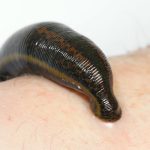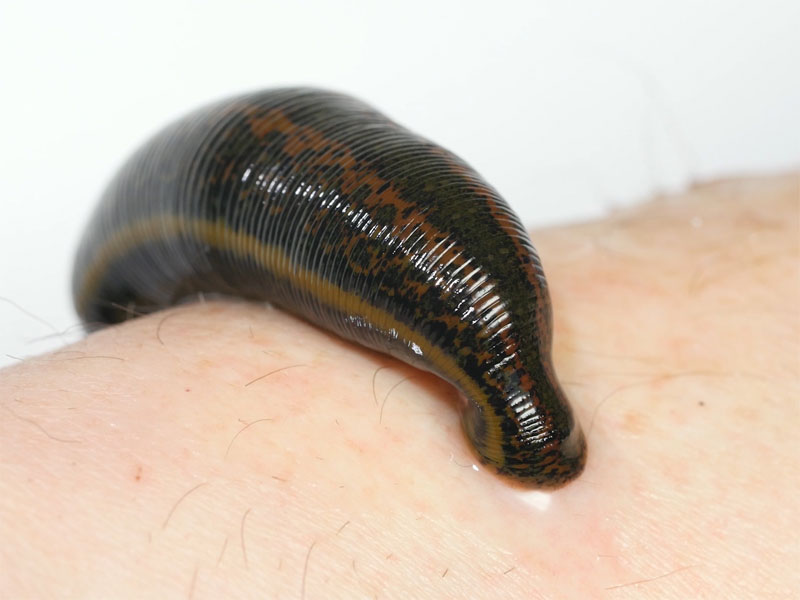 An Anglo-Saxon word for a healer. The art of the leech is leechcraft or leechdom.
An Anglo-Saxon word for a healer. The art of the leech is leechcraft or leechdom.
A blood-sucking parasitic worm which lives in water, occasionally used in specialist procedures.
Worm, some species of which are parasitic, sucking blood from humans and other animals. Leeches were once commonly used in medicine for blood-letting.
A flat, ringed, carnivorous or bloodsucking worm. Leeches were once widely used for bloodletting (drawing blood from the body, particularly via the fingers or toes), and they are still used for medicinal purposes today. Leeches are used to relieve blood congestion in certain kinds of delicate surgery, such as microsurgery to replace a severed finger or other body part, because their use is less likely to cause infection than other techniques.
A type of worm that possesses suckers at both ends of its body. Leeches occur in tropical forests and grasslands and in water. Certain parasitic species suck blood from animals and man, and their bites cause irritation and, occasionally, infection. Rarely, leeches are taken in with foul drinking water and pass from the mouth to the nose, where they provoke headache and nosebleeds. A leech can be detached from its host either by applying salt or by touching it with a lighted cigarette. Calamine lotion eases the irritation of the bites. Leeches were formerly used in bloodletting.
Animals provided with suckers surrounding the mouth, and living a semi-parasitic life, their food being mainly derived from the blood of other animals. They extract blood by means of the sucker, which has several large, sharp teeth. Land leeches live in tropical forests and can attach themselves to a person’s ankles and lower legs. Aquatic leeches are found in warm water and may attach themselves to swimmers. Their bites are painless, their saliva reducing the clotting properties of blood with hirudin, the result being that the wound continues to bleed after the leech has detached itself or been gently removed (lighted match, alcohol, salt, and vinegar are all effective removal agents). The medicinal leech, Hirudo medicinalis, was formerly employed for the removal of small quantities of blood in inflammatory and other conditions. Nowadays it is occasionally used to drain haematomas and to manage healing after certain types of plastic surgery.
A bloodsucking water worm, belonging to the phylum Annelida, class Hirudinea. It is parasitic on humans and other animals. Leeches were used as a means of bloodletting, a practice common up to the middle of the 19th century but now almost completely abandoned. The worms are a source of hirudin, an anticoagulant secreted by their buccal glands. In modern medicine leeches are used to evacuate periorbital hemorrhage (black eye) and to remove congested venous blood from the suture lines of reimplanted fingers. In addition to hirudin, leech saliva contains several active substances including inhibitors of platelet aggregation, that have been synthesized for use as anticoagulants in clotting disorders.
This describes a flattened, bloodsucking worm featuring a sucker at each of its ends. These worms, known as leeches, are found primarily in tropical forests and waters. Their bites are usually painless as they release saliva into the wound before extracting blood. The saliva of leeches contains a substance called hirudin, which prevents blood clotting and might lead to extended bleeding from the wound.
Leeches are occasionally employed in the field of medicine to assist in the drainage of hematomas (accumulations of blood) from wounds. Furthermore, they are sometimes utilized to enhance tissue circulation following surgical procedures.
